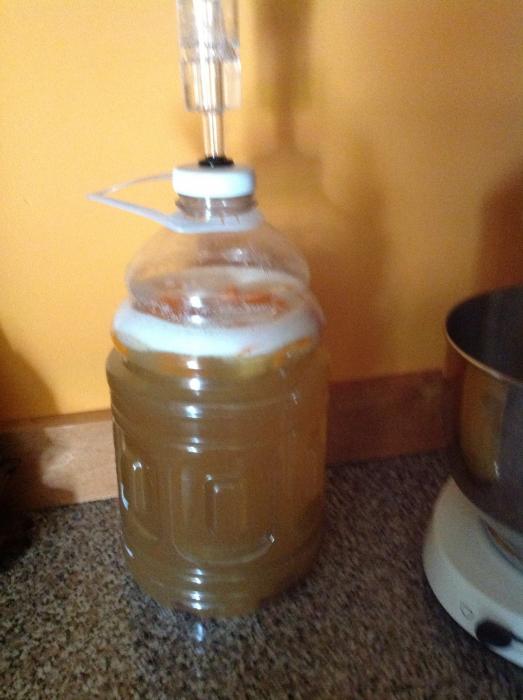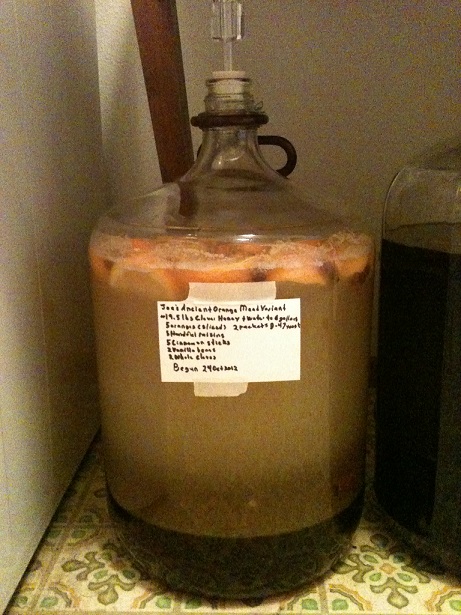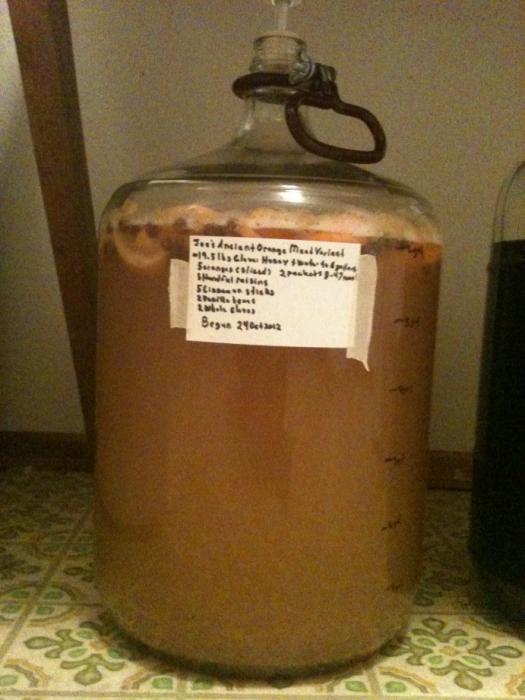Something that would make this recipe even easier is using the wild yeast already available in honey. I have a running yeast starter going for a while now, per Sandor Katz's "The Art of Fermentation" and I've made some good short runs of freshly alcoholic juices and such, as well as ginger beer and root beer type drinks. The starter itself smells good, fizzes up EXPLOSIVELY, seems to 'flocculate' well at the bottom of the container, and the end products taste good - but I haven't tested anything like attenuation or alcohol tolerance. Only been doing this a few months so I haven't aged anything out. But it's nice because it's free, seems to work, and if it ever dies I'm pretty sure I could duplicate it using the same honey.
Has anyone tried this? Any thoughts? I know real homebrewers and most books are very skeptical about wild yeast fermentation but I haven't read many accounts of people actually giving it a shot.
What happens is that raw honey already contains yeast, but they're inhibited by the low water content of honey, like 19% I think? Increase that water content by any amount and they will initiate fermentation.
I imagine you could mix this up without the yeast and within 1-3 days you'd have a vigorous bubbly batch going. If you're really afraid of wild yeast you could mix up a honey and water starter (any proportion, but probably 1 part honey to 3 or 4 parts water) and let that sit for a couple days, and when it's fizzy smell it and see what you think.
Anyhow, I have two batches going, one with my wild yeast and one with bread yeast. They both bubbled vigorously, and now everything except the oranges have settled to the bottom. The bread yeast seems to stir up much easier, but whatever. I don't even really care that much about cloudiness at this point. They both smell the same, very good. I'm curious if there will be a taste difference at the end.
By the way you have to use raw honey, but I'm not sure normal storebought honey is pasteurized or not. The little jars at Target here don't say, and honey preserves itself so well, so I'm curious if all honey is raw or not.
Chris











































![Craft A Brew - Safale BE-256 Yeast - Fermentis - Belgian Ale Dry Yeast - For Belgian & Strong Ales - Ingredients for Home Brewing - Beer Making Supplies - [3 Pack]](https://m.media-amazon.com/images/I/51bcKEwQmWL._SL500_.jpg)


















